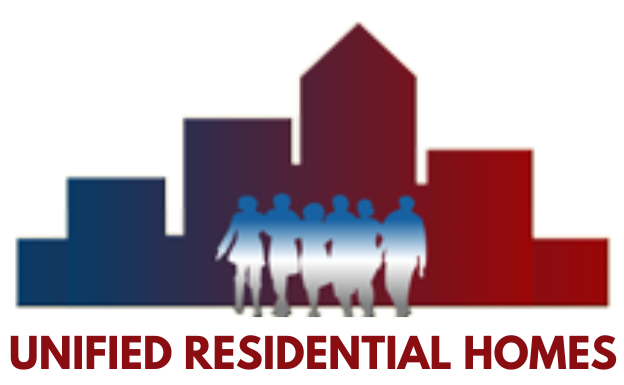Trainings
Article-9
This course establishes clear guidelines regarding behavior intervention techniques, categorizing them into three main groups:
- Prohibited Techniques
These techniques are not allowed under any circumstances due to ethical, safety, or legal concerns. The course outlines specific actions and methods that are strictly forbidden to ensure the safety and well-being of all students. Examples of prohibited techniques might include any form of physical punishment or actions that could cause harm or distress to the student. - Techniques Requiring Division-Approved Behavior Plan
Some techniques may be employed only with prior approval through a formal, division-approved behavior plan. This plan is designed to ensure that any intervention used aligns with the individual needs of the student and adheres to established standards and guidelines. These techniques typically involve specific strategies that address challenging behaviors and require documentation and review by relevant authorities. - Techniques Requiring No Prior Approval
There are also standard techniques that require no prior approval. These are generally accepted practices for managing behaviors and can be implemented by educators or support staff in various situations. Such techniques often include positive reinforcement, verbal prompts, and other non-intrusive methods that support positive behavior and learning outcomes.
This structure helps create a safe, transparent, and consistent approach to behavior management across educational settings.
CPR / First-aid Training
The CPR and First Aid Training course is a critical program designed to teach individuals how to provide immediate, life-saving assistance during medical emergencies. This course covers essential skills to help stabilize a person until professional medical help arrives.
Key Components of CPR and First Aid Training
- CPR (Cardiopulmonary Resuscitation)
- Participants learn to recognize cardiac emergencies and perform CPR, a vital skill for cases where an individual’s heart has stopped beating.
- Training includes performing chest compressions and, if applicable, providing rescue breaths to sustain blood flow and oxygen to vital organs until emergency responders arrive.
- Basic First Aid
- Injury Management: Teaches how to address injuries like cuts, burns, fractures, and sprains, focusing on minimizing harm and reducing pain until help arrives.
- Choking Response: Participants learn to identify choking situations and respond with techniques like abdominal thrusts to clear airway blockages.
- Bleeding Control: Covers methods to stop or reduce bleeding, including applying pressure and using bandages.
- Burn Treatment: Provides instruction on treating different types of burns, including cooling and dressing techniques.
- Emergency Preparedness
- The course emphasizes calm and effective responses to emergencies, enabling participants to manage high-stress situations.
- Participants learn to evaluate the scene, prioritize care, and make quick decisions that can significantly impact outcomes in life-threatening situations.
Benefits of the Training
- This course empowers individuals to respond confidently to emergencies, offering them the skills needed to provide life-saving interventions.
- Completing CPR and First Aid training is valuable for professionals and everyday citizens, enhancing community safety by preparing more people to act during unexpected crises.
The CPR and First Aid Training course equips people with practical knowledge and critical skills to handle emergencies effectively, making it a valuable asset for anyone.
Prevention and Support
Prevention and Support is a mandatory, in-depth 9-hour certification course designed to equip staff in Developmental Disabilities Division (DDD) settings, care homes, and day programs with essential skills for managing and supporting individuals with challenging behaviors. This course emphasizes the importance of positive interactions and proactive strategies to reduce the likelihood of crises.
Course Highlights
- Core Focus Areas:
- Positive Relationships: Emphasizes fostering trusting, supportive relationships with individuals to create a foundation for effective behavior support.
- Positive Behavioral Support: Introduces person-centered approaches to encourage constructive behaviors and improve quality of life.
- Proactive Strategies: Teaches staff how to anticipate and prevent behavioral issues before they escalate, minimizing disruptions and promoting a calm environment.
- Identifying Behavioral Emergencies: Provides guidelines for recognizing when a behavior constitutes a true emergency, allowing staff to respond appropriately and effectively.
- Response and Intervention Techniques:
- Calm and Supportive Response: Staff are trained in techniques to respond calmly to challenging behaviors, providing reassurance and reducing escalation risks.
- Emergency Physical Intervention Techniques: In cases where a behavioral or physical emergency occurs, participants learn specific, approved techniques for physical intervention. Emphasis is placed on safety and only using physical interventions as a last resort.
This course is essential for all staff in DDD and related care settings, ensuring they are equipped to handle challenging behaviors safely, effectively, and compassionately.
Positive Behavior Support
Positive Behavior Support (PBS) is a
person-centered, proactive approach designed to enhance the quality of interactions between individuals and their caregivers. It prioritizes understanding and addressing the root causes of challenging behaviors, ultimately working to foster a more positive environment. Here’s a breakdown of PBS in practice:
- Purpose of PBS
PBS aims to improve the quality of life for individuals, particularly those receiving Developmental Disabilities Division (DDD) services, by addressing behaviors that may impact daily living. It’s built on research-based strategies that both reduce challenging behavior and promote desirable alternatives, supporting a more positive, cooperative environment. - Training Model for Caregivers and Direct Support Professionals (DSPs)
The PBS model provides caregivers and DSPs with specific skills, tools, and resources for effective behavior management. This training focuses on: - Understanding the individual’s needs and triggers
- Learning proactive strategies for positive reinforcement
- Building consistency in responses and interventions
- Utilizing data-driven assessments to guide behavior plans
- Impact on Environment and Relationships
By empowering caregivers with PBS strategies, the environment becomes more supportive and structured, which often reduces instances of challenging behavior and leads to improved relationships between the individual and their support network.
In essence, PBS not only aids in behavior management but also promotes a respectful, collaborative environment that enhances the individual’s overall quality of life.
DCW
(Direct Care Worker)
The Direct Care Worker (DCW) Certification Course is a comprehensive program designed to train individuals in professional caregiving according to Arizona's standards. This course ensures participants are equipped with the skills, knowledge, and credentials needed to work as certified Direct Care Workers in Arizona.
Course Overview
- Certification Recognition
- Upon completion, the DCW certificate is recognized statewide by all caregiver employers, validating the participant’s competence in delivering quality care aligned with Arizona standards. This certification prepares participants for meaningful roles in various caregiving settings, especially in services associated with the Arizona Health Care Cost Containment System (AHCCCS) and other state programs.
- Core Components of Training
- Up-to-Date Instruction: Course content is continually updated to reflect best practices, latest regulations, and relevant skills for caregiving.
- Skills Testing: Participants undergo hands-on assessments to ensure they demonstrate the necessary caregiving skills.
- Guidance and Support: State-approved instructors provide personalized support, practical guidance, and mentorship throughout the training.
- Key Topics in Developmental Disabilities:
- Introduction to the Division of Developmental Disabilities: Offers a foundational understanding of Arizona’s Division of Developmental Disabilities (DDD), its mission, and its services.
- Support Planning: Educates participants on how to collaborate with individuals and families in creating and implementing personalized support plans.
- Abuse and Neglect: Covers essential information on recognizing, reporting, and preventing abuse and neglect to protect vulnerable individuals.
- Incident Reporting: Trains participants in proper documentation and reporting procedures for incidents to maintain accountability and ensure safety.
- Activities of Daily Living (ADLs): Teaches practical skills for assisting individuals with day-to-day tasks, such as personal hygiene, dressing, and mobility.
- Positive Behavior Support (PBS): Provides strategies for fostering positive interactions, reducing challenging behaviors, and enhancing quality of life.
This course is an essential step for anyone aspiring to become a Direct Care Worker in Arizona, equipping them with the foundational knowledge, practical skills, and state-recognized certification needed to succeed in caregiving.
Abuse and Neglect
The Abuse and Neglect Awareness Course is designed to educate participants on the critical aspects of recognizing, understanding, and reporting abuse and neglect. This course is essential for caregivers, healthcare professionals, and anyone working with vulnerable populations to ensure safety and well-being.
Course Overview
- Definitions of Abuse and Neglect
- Provides clear and comprehensive definitions, covering various types of abuse (e.g., physical, emotional, sexual) and neglect, including acts of omission or failure to meet an individual’s basic needs.
- Explains the differences between abuse and neglect, emphasizing the importance of recognizing both as serious forms of harm.
- Types and Indicators of Abuse and Neglect
- Physical Signs: Teaches participants to identify visible signs of physical abuse or neglect, such as bruises, burns, or unexplained injuries.
- Emotional Signs: Covers emotional and psychological indicators, including fearfulness, withdrawal, anxiety, and other behavioral changes that may signal abuse.
- Environmental Signs: Discusses signs within an individual’s living environment that may indicate neglect or mistreatment, such as unsafe conditions, lack of hygiene, or inadequate access to basic necessities.
- Reporting Abuse and Neglect
- Outlines the procedures and requirements for reporting suspected abuse and neglect, including when, how, and to whom to report.
- Emphasizes legal and ethical responsibilities, ensuring participants understand the importance of timely and accurate reporting to protect individuals from further harm.
Benefits of the Training
- By completing this course, participants gain the knowledge and confidence to identify signs of abuse and neglect, helping to protect vulnerable individuals from ongoing harm.
- This training enhances the ability of staff to provide a safe, supportive environment and empowers them to take necessary actions when abuse or neglect is suspected.
The Abuse and Neglect Awareness Course is vital for anyone involved in caregiving, as it builds awareness and provides practical skills to ensure the safety and well-being of those in their care.
All Unified Residential Homes care providers meet the State of Arizona requirements, have a valid Finger Print Clearance Card, clean background, and have successfully passed all of URH training courses.

